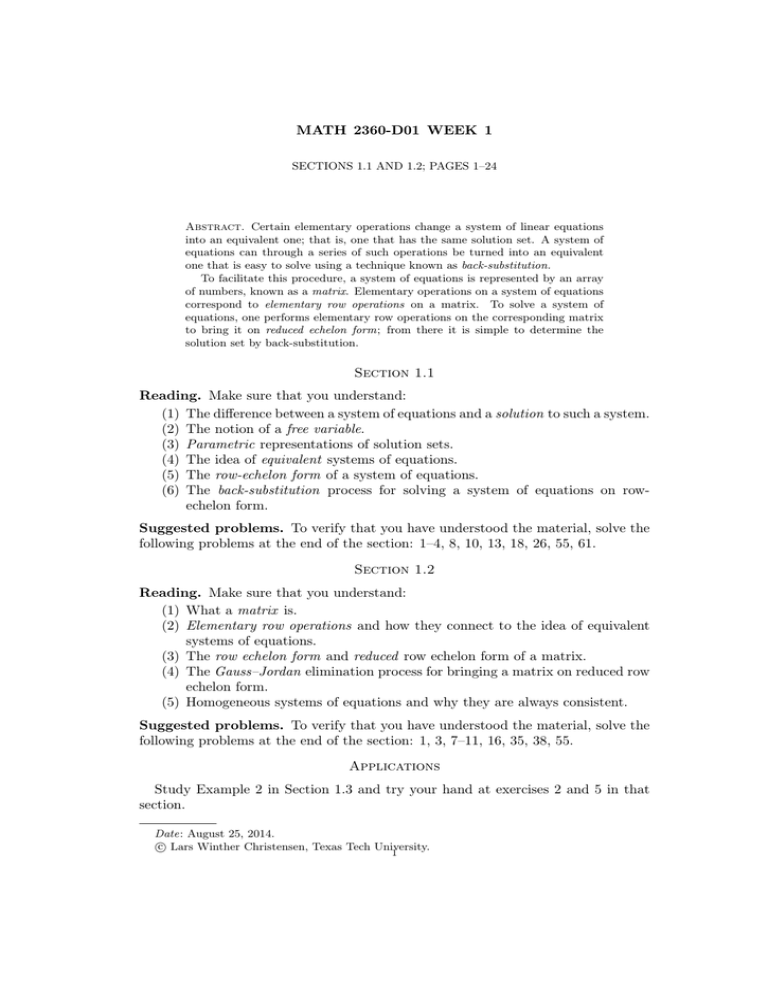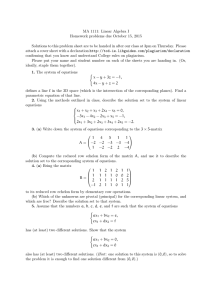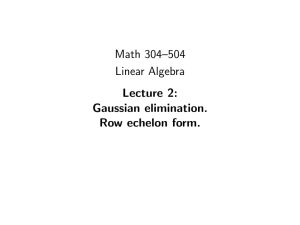MATH 2360-D01 WEEK 1
advertisement

MATH 2360-D01 WEEK 1 SECTIONS 1.1 AND 1.2; PAGES 1–24 Abstract. Certain elementary operations change a system of linear equations into an equivalent one; that is, one that has the same solution set. A system of equations can through a series of such operations be turned into an equivalent one that is easy to solve using a technique known as back-substitution. To facilitate this procedure, a system of equations is represented by an array of numbers, known as a matrix. Elementary operations on a system of equations correspond to elementary row operations on a matrix. To solve a system of equations, one performs elementary row operations on the corresponding matrix to bring it on reduced echelon form; from there it is simple to determine the solution set by back-substitution. Section 1.1 Reading. Make sure that you understand: (1) The difference between a system of equations and a solution to such a system. (2) The notion of a free variable. (3) Parametric representations of solution sets. (4) The idea of equivalent systems of equations. (5) The row-echelon form of a system of equations. (6) The back-substitution process for solving a system of equations on rowechelon form. Suggested problems. To verify that you have understood the material, solve the following problems at the end of the section: 1–4, 8, 10, 13, 18, 26, 55, 61. Section 1.2 Reading. Make sure that you understand: (1) What a matrix is. (2) Elementary row operations and how they connect to the idea of equivalent systems of equations. (3) The row echelon form and reduced row echelon form of a matrix. (4) The Gauss–Jordan elimination process for bringing a matrix on reduced row echelon form. (5) Homogeneous systems of equations and why they are always consistent. Suggested problems. To verify that you have understood the material, solve the following problems at the end of the section: 1, 3, 7–11, 16, 35, 38, 55. Applications Study Example 2 in Section 1.3 and try your hand at exercises 2 and 5 in that section. Date: August 25, 2014. c Lars Winther Christensen, Texas Tech University. 1




